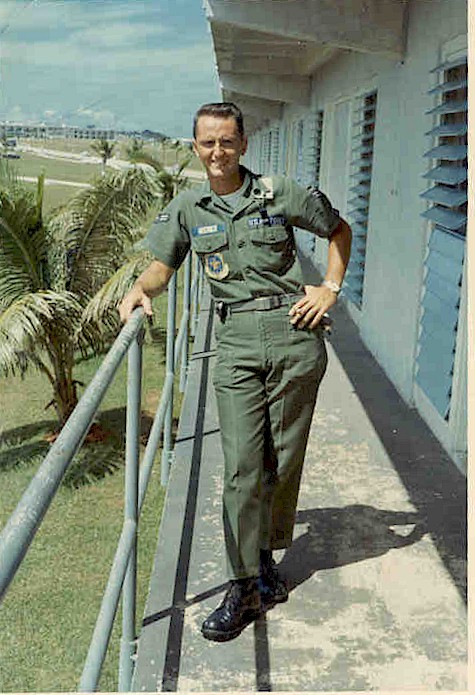
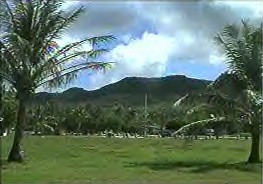
ANDERSEN AFB, GUAM
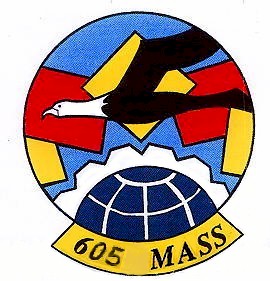

The area on Guam on which the Spearheaders drew the lines was known as a forest area – an almost impenetrable stand of trees and brush that covered the northern end of Guam. By February 1945, a runway complex was operational at what was then known as North Field. By June the finishing touches were almost complete and North Field aircraft began daily bombing missions over Japan.
The field was redesignated North Guam Air Force Base in 1947 – the same year the Air Force became a separate service. Two years later, the base was renamed in honor of Brig. Gen. Roy Andersen. Andersen had been chief of staff at Harmon Field, Guam, when his aircraft disappeared en route to Hawaii in February 1945.
When fighting erupted in Korea, Guam became a focal point for aircraft and material flying west. In 1951, Andersen began supporting rotational bomber deployments from stateside bases, first with B-29s, and eventually hosting B-36, B-47 and, in 1964, B-52 units.
For the next six years, Strategic Air Command trained and practiced its wartime skills – which would be tested time and time again as the conflict in Southeast Asia escalated. Andersen would play a major part in the Vietnam conflict, when 27 B-52 bombers were launched from its runway June 18, 1965. The aircraft initiated Operation Arc Light, bombing missions over North and South Vietnam to strike Viet Cong base operations and enemy troop concentrations and supply lines. Arc Light missions continued for eight years.
In 1972 Andersen was the site of the most massive build up of airpower in history. More than 15,000 people and more than 150 B-52s lined all available flightline space. During Operation Linebacker II in December 1972, bombers stationed at Andersen flew 729 sorties in 11 days, resulting in renewed peace talks in Paris.
The post-Vietnam period brought a return to routine operations at Andersen, with the base remaining a vital overseas platform for carrying Strategic Air Command’s global-deterrence mission. In October 1988, the host 43rd Bombardment Wing traded its nuclear-deterrent role for a conventional mission. One year later, the bomb wing began redeploying to stateside bases, and Andersen transitioned from SAC to Pacific Air Forces with the activation of the 633rd Air Base Wing. The 43rd BW was officially inactivated Sept. 30, 1990. As part of an Air Force-wide initiated to preserve the heritage of the Air Force’s most-decorated units, the 633rd ABW inactivated Sept. 30, 1994, and was redesignated the 36th Air Base Wing. Since the airfield became operational as North Field in 1945, it has continually played vital roles in maintaining U.S. presence in the Pacific. Aircraft flying in and out of Andersen participated in both world wars, the conflict on the Korean peninsula, the Vietnam conflict, and Operations Desert Shield and Storm.
Andersen forces also played a key role in Operation New Life, the evacuation of thousands after the fall of Saigon in 1975. During New Life, Andersen received more than 40,000 refugees and processed another 109,000 for onward transportation to the United States mainland. Andersen also played a key role in Operation Baby Lift, an element of New Life in which the U.S. evacuated 1,500 orphans from Vietnam and Thailand in April 1975.
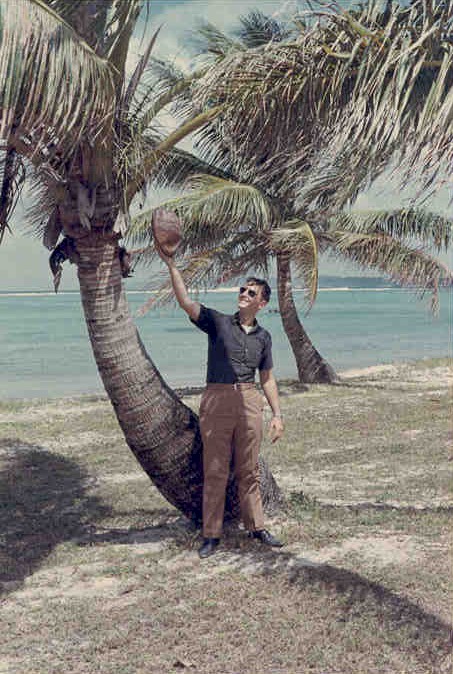
When Uncle Albert was stationed at Andersen AFB in Guam, he worked on the flight line, Taxiing planes for parking and refueling. He also would check the maintenance book on the aircraft for any scheduled maintenance. Further, while there he would service commerical airlines that were tranporting troops to or from Viet Nam. He would change shifts every 3 months. The B-52's that were also stationed ther played a big part in the Vietnam war.
Soon after arrival, in June of 1965, the B-52s were ready to commence combat operations against suspected Viet Cong positions in South Vietnam. The missions were code named Arc Light and Young Tiger. Fearing the political ramifications of losing a B-52 over North Vietnam, the bomber's mission was restricted from attacking North Vietnam.
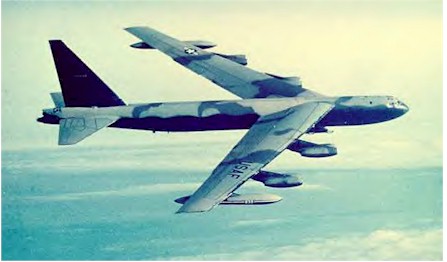
On June 18, 1965, the first such raid was carried out against suspected Viet Cong forces in Ben Cat, just 40 miles from Saigon. Twenty-seven B-52Fs took off from Guam, refuelled, and proceeded to the target. Results were difficult to measure, however, as bombing accuracy was poor. Not only was this the first combat use of the B-52, it was also the first combat loss. Two B-52s collided soon after takeoff in a tragic accident, with a loss of all eight crewman.
Nonetheless the Arc Light raids continued, despite some misgivings within SAC regarding the use of high altitude radar bombing against the Viet Cong, by all accounts a scattered guerrilla force. The effectiveness of mass area bombing, however, was soon proven and the plane went on to play a very successful role supporting ground forces in combat. By the spring of 1966, all of the B-52Fs were replaced in the field by B-52Ds, each of which was modified to carry more conventional weapons than the F model. These modifications were termed the "Big Belly" B-52D. A single D Model could carry over 108 of the deadly 750 pound iron bombs.
For the next 30 months, B-52Ds flew out of Andersen AFB on Guam, U Tapao in Thailand, and Kadena AB on Okinawa, hitting targets across Southeast Asia, including in Laos and Cambodia, as well as the famous Ho Chi Min Trail. To further beef up the force, B-52Gs were also deployed to the combat zone. The BUFF played a decisive role at Khe Sanh, where six plane elements attacked enemy positions every three hours. By the end of the battle, the area surrounding Khe Sanh looked like a battered moonscape. Countless thousands of the enemy had perished.

At the end of March of 1972, the North Vietnamese commenced a massive invasion of South Vietnam. Within three days, B-52s entered the fray. The campaign was code named Freedom Train. It wasn't long before the limitations of Arc Light were removed. For the first time, B-52s crossed the border, pounding rail yards at Vinh, airfields at Bai Thuong, and targets around Hanoi and Haiphong.

As 1972 and Operation Linebacker rolled on, these peace negotiations between the North and South, with America at the table, were at a high tempo in Paris. Henry Kissinger was face to face with North Vietnamese leader Le Duc Tho. The ultimate goal was to eliminate the US presence in the region and establishing a peace between the North and South -- the so-called "Peace with Honor."
The North Vietnamese, however, had other plans. Negotiations were instead designed to allow the North to gain advantages and time to prepare for the next round of the war. On the face of it, discussions were increasingly positive and by late October the United States halted its bombing campaign above the 20th parallel as a sign of good faith. What was being said at the table in Paris, however, was not being carried out on the ground. With much of the North again off-limits to the bombers, the North started an unprecedented buildup.
During this period, the B-52 also saw its first loss in combat. A B-52D model, flying out of U Tapao in Thailand, was hit by a surface to air missile (SAM). The crew flew the damaged plane all the way back across the border but couldn't save the plane and was forced to eject. It was the first loss in over seven years of combat missions.
Finally, as reconnaissance overflights revealed that the Paris talks were clearly little more than a cover for North Vietnam's next planned offensive, President Nixon ordered the commencement of a new, massive bombing campaign. It would be a no-holds barred effort targeting supply sites, oil storage, air bases, missile sites, ammunition dumps, railroad yards, and communications centers across the North. His orders were brilliantly simple: he let the military do the job it did best, without political limitation. Even Hanoi and Haiphong were placed on the target list. The watchword was to do whatever it took to win the war
Under the exclusive control of the Pentagon and without the ill-effects of political meddling, Operation Linebacker II commenced during the night of December 18, 1972. Airbases at Hoa Lac, Kep, and Phuc Yen were attacked, as well as rail and warehouse facilities at Yen Vien and Kinh No.
From the beginning of the operation, losses were heavy. On the first night, two B-52s were shot down by missiles. The second night, the force lost none of the bombers, though several were damaged. The North Vietnamese were smart operators -- they watched, studied and learned about US bombing techniques. Conversely, Air Force planners were emboldened by the success of the second night and made almost no changes in the attack plan for the third night of operations.
It would prove to be a disaster. Six B-52s were shot down. Russian-made SAMs filled the night skies around Hanoi and Haiphong. Furthermore, MiG-21s aggressively hunted the bombers, not only engaging them but more importantly radioing altitude, heading and speed information to the missile controllers below. The situation worsened when the bomber's protected corridor of chaff (which reflected radar, hiding the bomber's location) was blown to the side by abnormally high winds. The bombers were particularly vulnerable after their target run, when they would bank into a turn to head home. In this position, their downward pointing air defenses would be pointing to the sides (with the plane in a banked turn), leaving the B-52s open to attack.
In response, the US changed tactics. After the bomb run, the US planes would fly straight out to sea before making their turn toward home. In addition, the SAM sites and SAM storage areas were mercilessly bombed. Thousands of missiles were destroyed, many still on storage racks. With the end of the SAM threat, losses fell off, such that only an additional seven aircraft were lost before the bombing was halted nine days later.
The entire campaign would last just eleven days -- it was punishment enough to convince the North Vietnamese to return to the Paris table and negotiate seriously. In all, Operation Linebacker II saw 729 B-52 missions flown, dropping 15,287 tons of bombs on 34 targets. Damage across North Vietnam was extensive. In all, 1,600 military structures were hit, 3 million gallons of petroleum had gone up in smoke, and 80 percent of the country's electrical power production had been destroyed. The Vietnamese had learned the hard way that the B-52, given enough time, really could "bomb them back into the stone age."
In air-to-air combat, the B-52 also proved itself well. A total of five MiGs were claimed, though ultimately just two were confirmed. Not a single bomber was lost to a MiG.
The negotiating round that followed Linebacker II was over by the end of January. An agreement terminating America's involvement in the South was in place and less than two months later the North released what it claimed was all American POWs.
Another year of Arc Light missions would follow, finally ending on August 15, 1973. By October, all B-52s were withdrawn from the region.
Uncle Albert would transfer in July of 1969 and elected to separate under teh Air Forces early out incentive.He eventually settled in Newport Vermont, went to work ofor the Ethan Allen Furniture company. He married his girlfriend Darleen and had two children Mark and Matt.